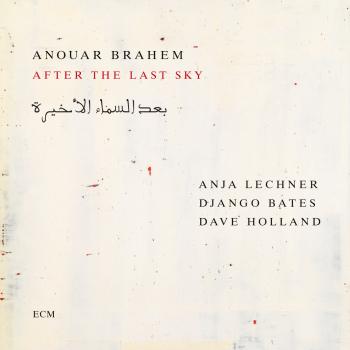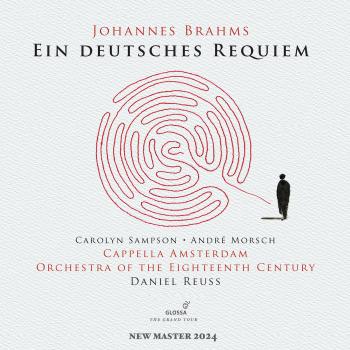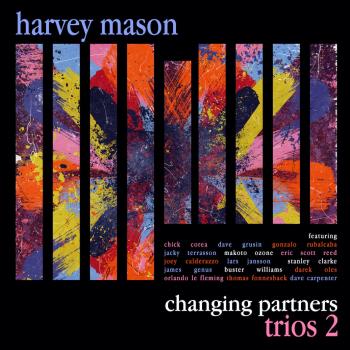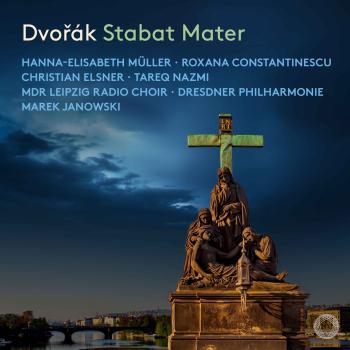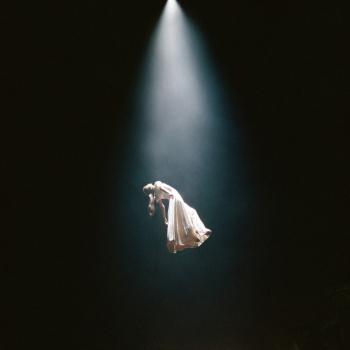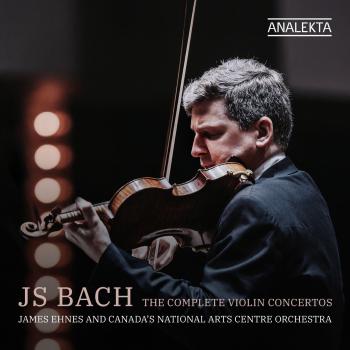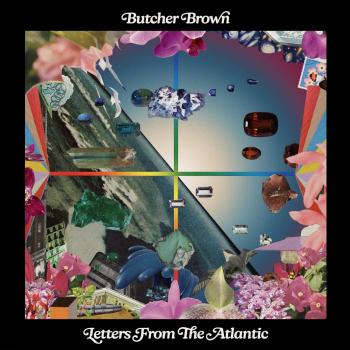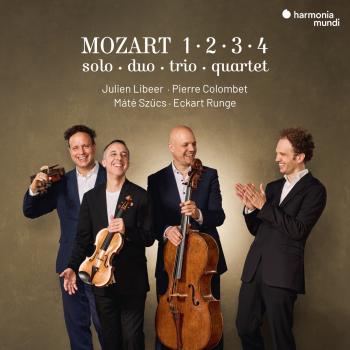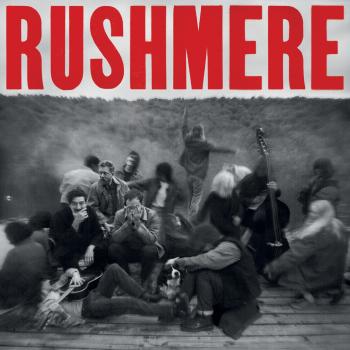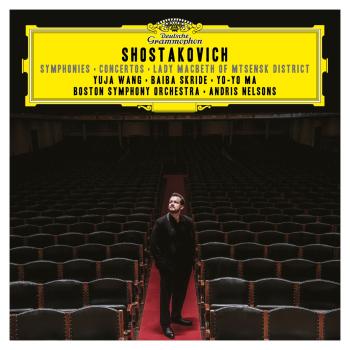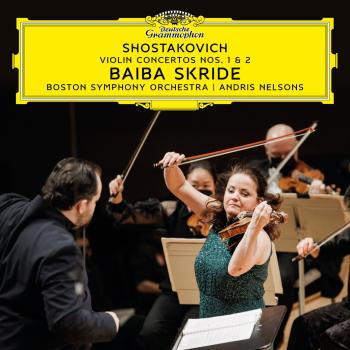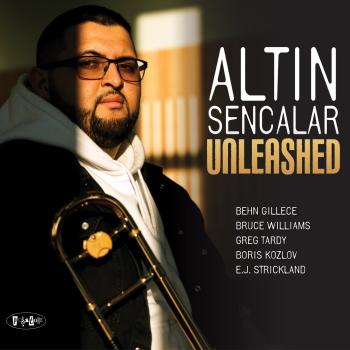
Live at Ronnie Scott's (Remaster) Johnny Griffin with Roy Hargrove & Billy Cobham
Album Info
Album Veröffentlichung:
2008
HRA-Veröffentlichung:
30.08.2016
Label: IN+OUT Records
Genre: Jazz
Subgenre: Mainstream Jazz
Interpret: Johnny Griffin with Roy Hargrove & Billy Cobham
Komponist: Lester Young, Johnny Griffin, Mike Hennessey, Irving Berlin, Clifford Brown
Das Album enthält Albumcover
- 1 Lester Leaps In 08:58
- 2 When We Were Done 12:52
- 3 The Blues Walk 06:00
- 4 Mentor 06:08
- 5 How Deep Is the Ocean 05:24
- 6 The JAMFS Are Coming 08:57
- 7 Hot Sake 12:27
Info zu Live at Ronnie Scott's (Remaster)
It was in February 1963 that Johnny Griffin made his first UK appearance - at Ronnie Scott's Club in London's Gerrard Street, where he played a four-week engagement, accompanied by Stan Tracey on piano. Malcolm Cecil on bass and Jackie Dougan on drums.
Introducing the band, Ronnie Scott said of Johnny: "He is one of the greatest-ever jazz tenor saxophonists." A sentiment emphatically endorsed by thousands of jazz lovers around the world.
On May 26th and 27th this year, the Little Giant was back in Ronnie Scott's to play a couple of evening sessions in a belated celebration of his 80th birthday. He was accompanied by Roy Hargrove (t, fl h), James Pearson or David Newton (p), Reggie Johnson (b) and Billy Cobham (d), plus special guest Paul Kuhn, the celebrated German pianist, composer, arranger and singer.
Sadly, that engagement proved to be Johnny Griffin's last UK appearance. He died just two months later - on July 25th - at his home in Availles Limouzine, France.
IN + OUT Records had the great good fortune to record those sessions and the resulting album - Johnny Griffin Live at Ronnie Scott's Club - is shortly due for release.
The notes for the album have been written by the distinguished producer, Orrin Keepnews, who was a close friend of Johnny Griffin for many years and who produced of many of his memorable albums.
For special guest Paul Kuhn, the Ronnie Scott sessions represented a happy reunion with the Little Giant, because they played together at the 2001 Burghausen Jazz festival with singer Silvia Droste. Paul had also worked previously with Roy Hargrove when Roy sat in with the Paul Kuhn & The Best group at the Rottweil Jazz Festival.
In a note about Johnny Griffin's performances, the UK magazine, Time Out, wrote: "Once dubbed the fastest saxophonist in the world, age has softened his technique, yet his natural charisma remains. Bringing a simply jaw-dropping line-up to town this time, he's joined by phenomenal, fiery US trumpeter, Roy Hargrove and iconic powerhouse drummer, Billy Cobham. Pianists James Pearson and Dave Newton and bassist Reggie Johnson complete this unmissable band."
And the Financial Times' Mike Hobart observed, "Griffin, noted for his razor-sharp mind, quick-fi re fi nger work and physical endurance, presented an energy-sapping, loose-themed set of jam-session favourites. The rapid fl ow of ideas and the raucous edge of rhythm
& blues were ever-present, though diminished in power, and Griffin still lards his solos with perfectly placed quotes.
"But what made the evening such an affectionate tribute was the multi-generational band, providing a safe pair of hands when accompanying, but taking no prisoners when unleashed.
"Drummer Billy Cobham and bassist Reggie Johnson were models of restraint, enhancing the veteran's every move, but once trumpeter Roy Hargrove or pianist James Pearson took over, they really upped the ante.
...Hargrove was on fire, a seemingly endless store of crisply articulated phrases tumbling out of his horn, and Pearson was not far behind, sailing over the time-honoured sequences as to the manner born."
"Little Johnny proceeded to cover the phases of his musical history without making it obvious. The opening The Blues Walk was followed by his own, more funky The JAMFs Are Coming, the original ballad, When We Were One and a bristling bebop workout on the changes of What Is This Thing Called Love...
"The drive produced by fellow expatriates, Reggie Johnson on bass and a very retro-sounding Billy Cobham, gave the horns all the stimulus they could want. "Roy Hargrove...did a good job of challenging the leader to step up. But so also did David Newton, whose sometimes-unconventional solos were visibly appreciated by the tenor man: As a result, by the time of the last tune, his scurrying lines were sounding like the Griffin of old." (Brian Priestley, Jazzwise)
„Johnny Griffin spent several decades living and working in Europe prior to his death, though he made occasional trips to the U.S. These live tracks come from two nights at Ronnie Scott's in London in 2008 a little over a month after Griffin's 80th (and what turned out to he his final) birthday, with the Little Giant joined by trumpeter Roy Hargrove and drummer Billy Cobham, plus bassist Reggie Johnson (an expatriate American also living in Europe) and English pianist David Newton, a last-minute substitute for James Pearson, who had worked with Griffin previously leading the house rhythm section but was unable to make one of the evenings booked. Griffin frequently has Hargrove solo first and the trumpeter steps things up a notch above his usual fine playing in the jazz master's presence. An obvious favorite is Griffin's sassy blues "The JAMFs are Coming," in which he leaves no doubt about how he feels about them, working in a hilarious quote from "Turkey in the Straw"; Hargrove's rich flügelhorn and Griffin's heartfelt tenor shine in the saxophonist's touching, bittersweet ballad "When We Were One"; while their chemistry is also extraordinary in Clifford Brown's exuberant bop vehicle "The Blues Walk." James Pearson spells Newton on the rousing take of "Lester Leaps In," with Hargrove and the pianist bracketing the leader's tightly knit solo. Paul Kuhn takes over the piano for a warm vocal rendition of "How Deep Is the Ocean." The rousing finale is an extended workout of Griffin's "Hot Sake," an easily recognizable reworking of "What Is This Thing Called Love." It's sad that Johnny Griffin died only two months after these performances, but one hearing will tell you he played his heart out during his final record date.“ (Ken Dryden, AMG)
Johnny Griffin, tenor saxophone
Roy Hargrove, trumpet, flugelhorn
James Pearson, piano (on track 1)
David Newton, piano (on tracks 2-4, 6, 7)
Billy Cobham, drums
Paul Kuhn, piano (on track 5), vocals (on track 5)
Digitally remastered
Johnny Griffin
One of the all-time great tenor saxophonists, Johnny Griffin will go down in the annals of jazz as a performer easily able to negotiate the tricky harmonic changes and swift tempos of modern music. He’ll also be remembered as a player who could masterfully interpret tender ballads, rivaling Ben Webster in that regard.
Born John Arnold Griffin III in Chicago, Illinois, on April 24, 1928, he resided on the South Side of the Second City with his mother, who was a singer, and father, who played cornet. An adolescent Griffin heard Gene Ammons play in the big band of King Kolax. Two years later he picked up an alto saxophone, and soon thereafter was working with bluesman T-Bone Walker. A student at DuSable High School, he was tutored by the legendary band director Captain Walter Dyett. Upon graduation, he toured with Lionel Hampton’s big band, switched to the tenor sax, and moved to New York City. The late ’40s saw Griffin honking his share of R&B with Joe Morris up to 1950, alongside the band of Jo Jones in 1950, and with Arnett Cobb in 1951. He enlisted in the armed services stationed in Hawaii, and played in an Army band.
After his military commitment, he returned to Chicago and was in the company of Thelonious Monk’s various ensembles up to the mid-’60s. Griffin cut his Blue Note album Introducing Johnny Griffin in 1958, and that year formed a sextet with Detroiters Pepper Adams and Donald Byrd. He collaborated with pianists Bud Powell and Elmo Hope, was enlisted by Art Blakey briefly as a member of the Jazz Messengers, energized his solo recording career for the Riverside label, and obtained his nickname, The Little Giant, with that eponymously titled LP in 1959. His most famous and popular teaming was with fellow saxophonist Eddie “Lockjaw” Davis. Griffin also recorded the legendary A Blowin’ Session for the Blue Note label with John Coltrane and Hank Mobley.
But Griffin grew weary of the U.S. and its apathy regarding jazz, so he became an expatriate. He was living in Paris, France, by 1963, and did many albums with European rhythm sections for the Storyville, Black Lion, and Steeplechase labels. He was also a charter member and chief soloist for many years in the Kenny Clarke-Francy Boland Big Band alongside American and Continental standouts. The year 1975 was an important one for Griffin, who was featured with the bands of Dizzy Gillespie and Count Basie as documented in recordings of their sets at the Montreux Jazz Festival. He also collaborated with German saxophonist Klaus Doldinger and his fusion band Passport. In the late ’70s, Griffin returned to the States to record for the Galaxy label, and toured with fellow expatriate tenor saxophonist Dexter Gordon.
He left Paris for the countryside of the Netherlands to live on a farm, then headed to the Côte d’Azur in 1980, and in 1984 to rural Availles-Limouzine. In 1986 he was a member of the Paris Reunion Band with Woody Shaw, Dizzy Reece, Slide Hampton, and Kenny Drew, making one album for the Sonet label. During his time in France, Griffin recorded for the Antilles and Verve labels, including The Cat in 1991 and Chicago, New York, Paris in 1994. On the weeks of his birthday, Griffin made regular appearances at the Jazz Showcase back home in Chicago. In his later years he collaborated with pianist Martial Solal and saxophonist Steve Grossman. Griffin passed away at age 80 on July 25, 2008, at his home in Availles-Limouzine. (Michael G. Nastos, AMG)
Dieses Album enthält kein Booklet

